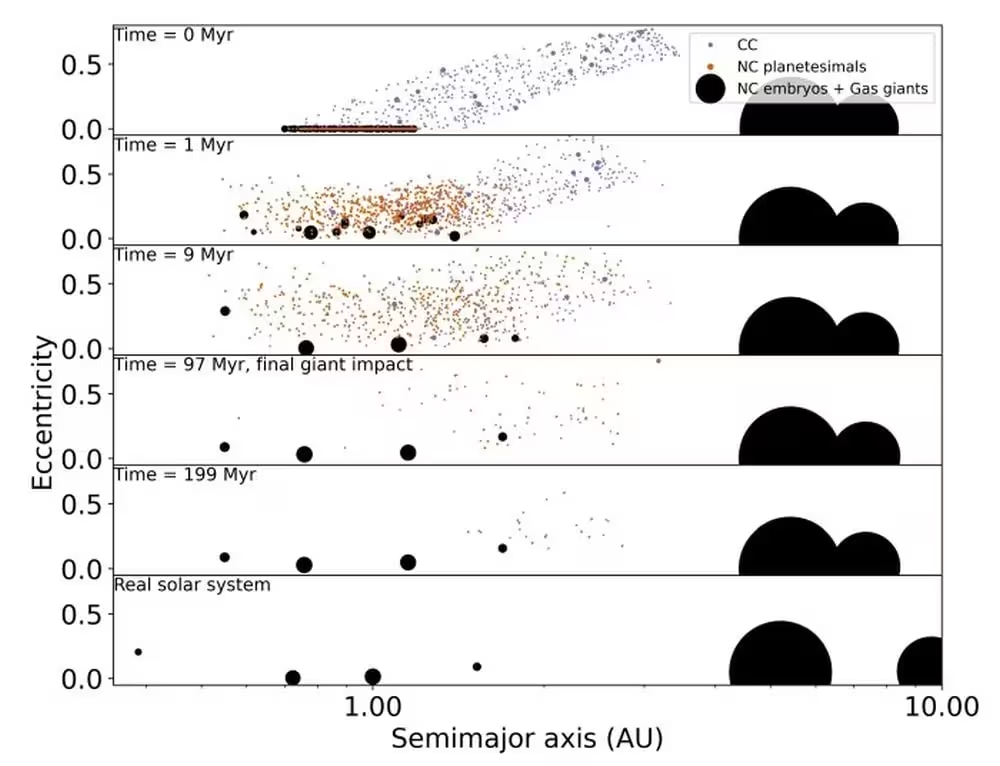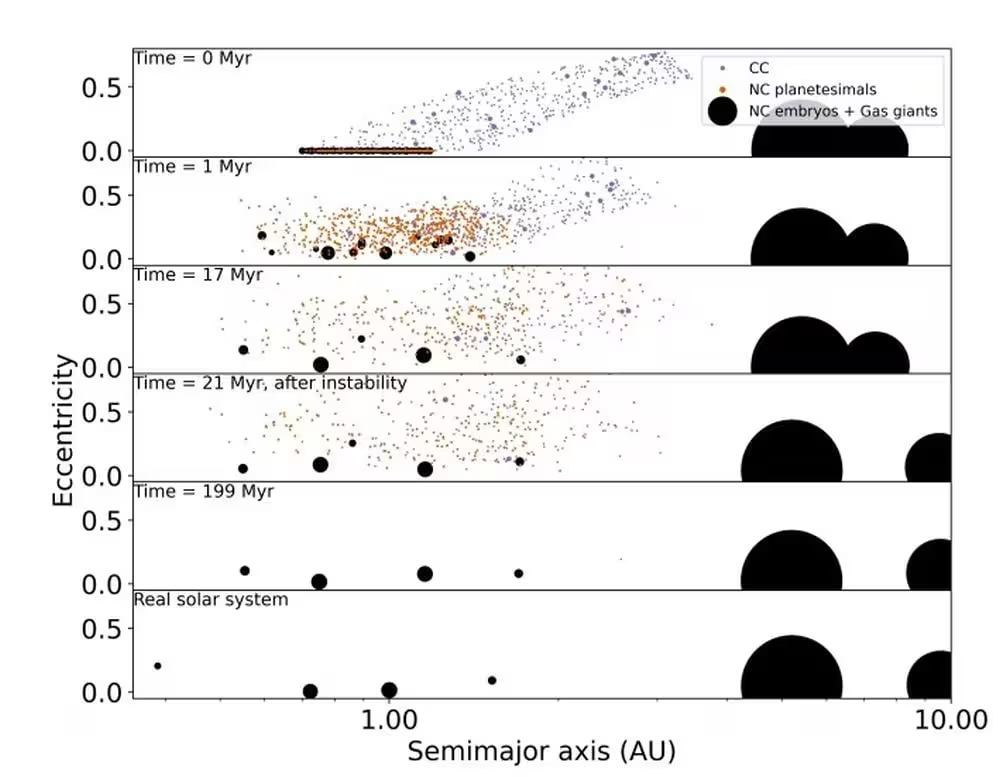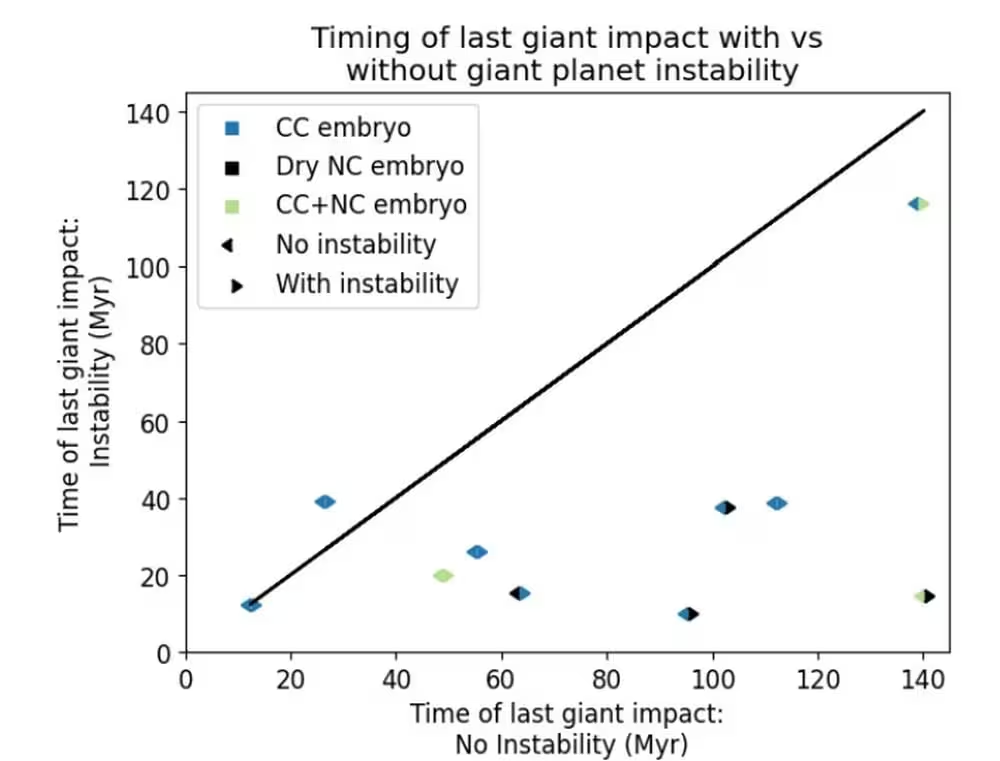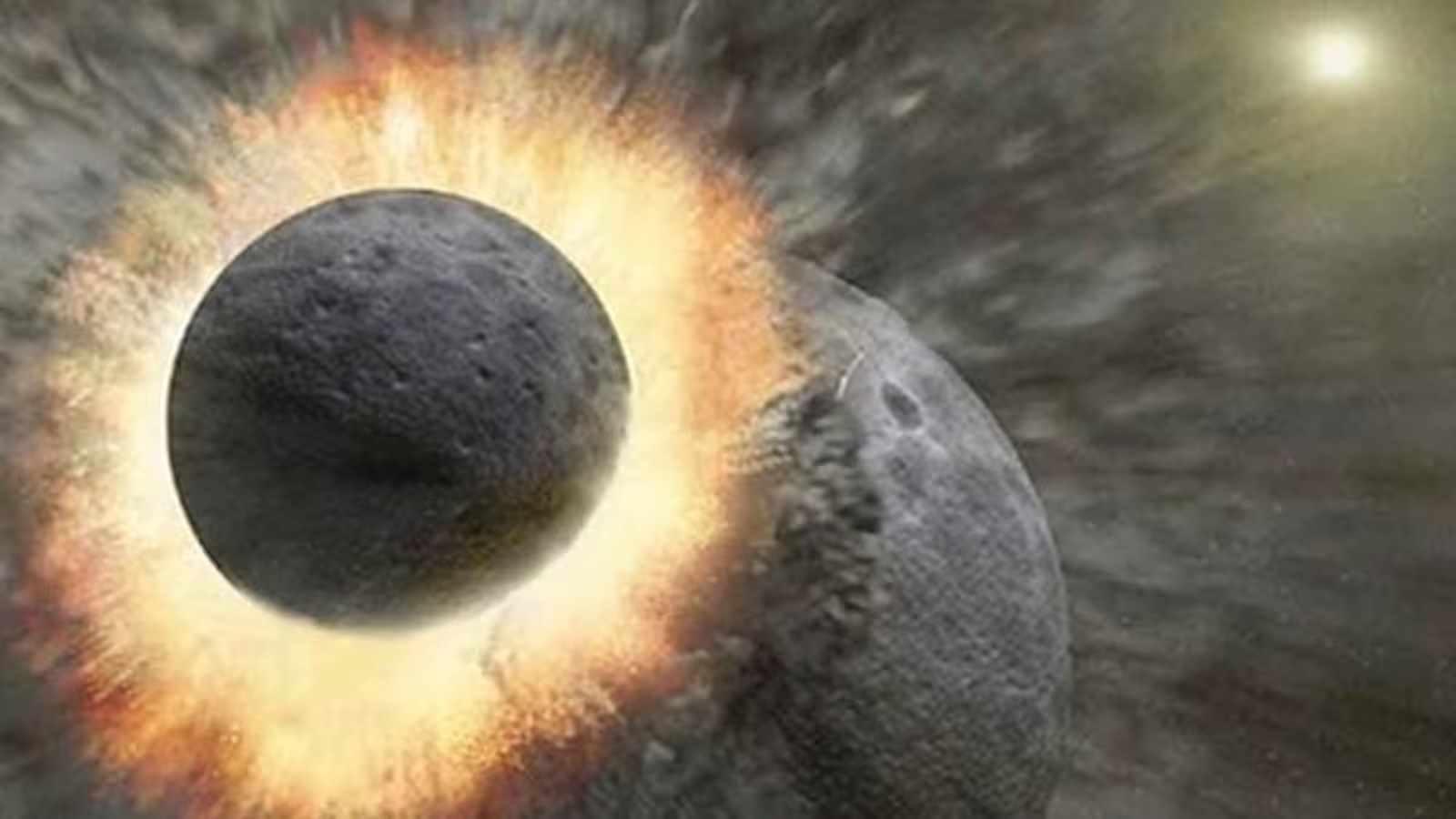8 Minutes
The Origins of Earth’s Habitability: A Cosmochemical Perspective
One of science’s enduring questions asks why Earth, among all the rocky planets in the Solar System, is uniquely suited to life. Amidst the cold and barren worlds surrounding us, our planet stands out as a warm, dynamic cradle for biological evolution. Recent advances in cosmochemistry—the study of how elements are distributed through space—are helping to reveal the cosmic events that may have set Earth on its life-friendly trajectory.
Early Solar System Dynamics: Chaos Breeds Opportunity
Roughly 4.5 billion years ago, the infant Solar System was a tumultuous arena. Planets were assembling from clouds of gas and dust, as planetesimals (small solid bodies) and planetary embryos (larger planetary building blocks) collided and merged. Unlike the tranquil orbits we see today, this formative era was marked by frequent, high-energy impacts that shaped the architecture of our planetary neighborhood.
Among these collisions, Earth received a significant share of carbonaceous chondrites—primitive, carbon-rich meteorites containing volatile elements, water, and even complex organics like amino acids. Studies indicate that 5–10% of Earth’s mass may be made up of these carbon-laden building blocks, delivered during this epoch of heavy bombardment. Notably, the colossal impact with an object called Theia, which is thought to have created our Moon, could have been a primary vehicle for ferrying these essential substances to Earth.
Cosmochemical Evidence: Carbonaceous vs. Non-Carbonaceous Meteorites
A fundamental distinction in planetary science categorizes meteorites into two broad types: carbonaceous chondrites (CCs) and non-carbonaceous meteorites (NCs). CCs are believed to have formed beyond Jupiter, where cooler conditions allowed water ice and organic compounds to accumulate. These meteorites are rich in volatiles—chemical elements that easily vaporize—providing the essential ingredients for planet habitability. By contrast, NCs, such as iron meteorites, are less volatile and originate closer to the Sun.
This division suggests our Solar System harbored two primary reservoirs of material. Earth’s uncommonly high fraction of CC materials hints at a special delivery mechanism early in its history, possibly connected to the Moon-forming impact.
Testing Theories with Solar System Simulations
To rigorously test the hypothesis that Theia delivered vast stores of carbonaceous material, a team led by Duarte Branco at the Institute of Astrophysics and Space Sciences in Lisbon undertook detailed dynamical simulations. Their research, to be published in the journal Icarus, models the chaotic final stages of terrestrial planet formation with advanced N-body simulations (computational models tracking the gravitational interactions among many objects).
Branco’s team simulated scenarios in which solid matter was divided into either small planetesimals, large planetary embryos, or a mix of both. These experiments tracked how CC and NC materials might have migrated and accreted onto developing terrestrial planets under different solar system architectures.

The Role of Giant Planets: Jupiter and Saturn’s Dynamic Influence
Critical to these simulations is the so-called "Nice model," which describes how giant planets like Jupiter and Saturn shifted their orbits after their formation. These movements caused dramatic gravitational disturbances, scattering CC-rich material from the far reaches of the solar nebula into the inner Solar System, where Earth lies.
By running simulations with and without this "planetary instability," the researchers examined how these events influenced carbon delivery to Earth and Mars. Their findings highlight that planetary migration events, especially Jupiter’s orbital repositioning, significantly increased Earth’s accumulation of carbonaceous chondrites.
The Theia Impact: A Catalyst for Earth’s Life-Friendly Chemistry
A centerpiece of these simulations is the hypothesized collision between the young Earth and Theia—a Mars-sized proto-planet. Previous geochemical analyses suggest Theia was likely carbon-rich, making it an ideal vector for delivering CC material.
The simulations affirm that, in scenarios mixing large planetary embryos and small planetesimals, the final giant impactor delivered to Earth (i.e., Theia) contained substantial CC content in over half of all runs. In about 38.5% of cases, the impacting object was a pristine carbonaceous embryo; in another 13.5%, it was a non-carbonaceous embryo that had previously merged with a CC-rich body.
This research strongly supports the idea that the Moon-forming impact was not only responsible for shaping Earth’s Moon but also for endowing our planet with the chemical tools essential for life—most notably, water and carbon-based molecules.

Impacts, Migration, and the Formation of Terrestrial Planets
The team’s models suggest the early solar system was structured as two nested rings of rocky debris: an inner ring of rocky material and an outer ring teeming with carbonaceous chondrites. As the ice giants (Uranus and Neptune) migrated inward, their gravity propelled many CC planetesimals toward the inner Solar System, supplying fresh material to the terrestrial region. While some of this matter became lodged in the asteroid belt, larger objects were funneled into eventual collision courses with Earth and its neighbors.
Simulated accretion histories display a series of giant impacts among embryos and smaller planetesimals—a process punctuated by occasional, but pivotal, collisions with CC-rich objects from the outer Solar System. This evolutionary pathway accounts not only for the unique masses and orbits of today’s inner planets but also the observed differences in their chemical makeup. Notably, the relatively low CC content of Mars compared to Earth finds a consistent explanation within these models.
Timing the Last Giant Impact
Branco’s simulations indicate that the final, moon-forming impact likely occurred between 5 and 150 million years after the young Solar System’s gas disk dissipated, with the majority of such collisions falling in the 20–70 million year range. This timeline fits comfortably within existing geochemical constraints and lunar formation theories.
Of particular interest, carbonaceous embryos and planetesimals were delivered across much of Earth’s early history, but the lion’s share seems concentrated in the system’s late, tumultuous phase—the epoch of the Moon-forming event.

Broader Implications: The Role of Jupiter and the Puzzle of Life-Friendly Worlds
Beyond the specifics of Earth’s chemical enrichment, these findings reinforce Jupiter’s critical role as a cosmic gatekeeper. The giant planet’s mobility helped truncate the asteroid belt and, crucially, redirected carbon-rich debris toward the habitable inner Solar System. This unique confluence of dynamical and chemical circumstances highlights how many factors must align to render a planet like Earth capable of supporting life.
"Within the context of this scenario, the last giant impactor on Earth contained a CC component in roughly half of all the mixed simulations," the authors note. In most of these, Theia itself was a pristine carbonaceous body, while the rest had previously absorbed carbon through earlier mergers.
These results have profound implications for the search for life beyond our Solar System. Being in a star’s habitable zone may not be enough; a planet’s chemical inventory depends on a web of unlikely events—giant impacts, planetary migration, and long-range delivery of life-essential volatiles.
Conclusion
New dynamical models strengthen the hypothesis that Earth owes much of its habitability—and even its biosphere—to a colossal moon-forming impact with a carbon-rich body. This striking scenario combines the chaotic dance of early planet formation, the migration of giant planets, and the fortuitous collision with Theia to seed Earth with water and organics. The fine-tuned sequence of impacts and accretions serves as a sobering reminder of the razor-thin odds underlying life’s emergence. As we continue to probe exoplanetary systems, these insights highlight that Earth’s path to habitability relied not simply on location, but on a complex cosmic choreography whose rarity we are just beginning to understand.



Comments